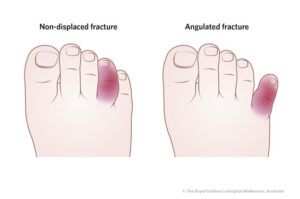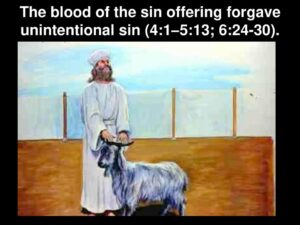Tazria – Metzoira 2023: Instant Punishments From Above
by devadmin | April 20, 2023 9:37 pm
Raboyseyee and Ladies,
We’re back from a two-week stay in Florida and are excited -beyond words- to announce the engagement of our beautiful daughter Alex, to Yaakov Rabi, he of Far Rockaway, originally from Yirusholayim, Israel. Mazel tov to the entire Grossman and Rabi families and may Alex and Yaakov merit to enjoy many decades of blissful marriage together. And so it shall be declared! A special mazel tov shout-out to the shver and shvigermeister, Irv and Ellie Bader. Mazel tov to Yaakov’s parents, Rabbi and Mrs. Binyomin and Bluma Rabi, they of Piskat Zev, Israel, to grandparents Rabbi Yitzchak & Mrs. Spira, and to paternal grandmother, Mrs. Shilu. And a big mazel tov to Alex and Yaakov’s siblings.

And just when the Ois was contemplating a serious diet, earlier this morning and just after the Ois returned from shul at 9:05 AM, the eishes chayil asked azoy: “did you got to the bris?” I had not but not too late. The Ois got back into the car and ran over to attend the bris of Paul Peyser, he the newborn son of Reva and Peyser, they the children of our friends Mindy and Alan Peyser. A big mazel tov to the entire extended Peyser and Schlanger families and may baby Paul Peyser -named after his grandfather but days after his first yurtzeit, be a source of much nachas to his parents, grandparents and extended family.

Instant Punishments From Above:
We’re just about done with korbonois and it’s time for some straight talk about sex and childbearing. Just kidding: the parsha is not about sex at all; only what happens after.
Welcome to Parshas Tazria, the front half of a springtime doubleheader -the first of the spring season- wherein we learn all about menstruation, childbirth, and much more. As well, a warm welcome to Parshas Metzoira, which is about leprosy and according to many, its root cause: loshoin horo. Zicher the heylige Ois and most readers – you included- know a thing or two about that topic. Tazria begins by informing us how boys and girls are made. Forget about chromosomes, the X factor, sperm spinning and other such narishkeyt (bs). Want to know how to make a boy? Learn the Parsha. Lommer unfangin yetzt (let’s begin now) as the heylige Ois has been quite busy with other zachin this past week. Which zachin you ask? Ershtens, last Wednesday he devolved an ugly stye in his right eye- his first ever- and a monster of a stye it was. Was the RBSO punishing the Ois for checking out the halb-nakite mydlech (half-naked girls) on Ft. Lauderdale beach? Perhaps. Lesson learned! The bottom line: it could have been worse; it could have been tzora’as all over his expanded Pesach body. Thank the RBSO for stretchy pants, best invention ever! Thankfully the stye presented only in the one eye and not all the skin. Had it presented differently, the Ois might have been declared a metzoira.

Next, for some totally irrational reason, on the way back from the pharmacy on the last day of Yom Tov, the Ois decided to see if he could still run. It’s been a few years since he’s had the time, if you chap, to run leisurely. Shoin, two-minutes later he popped a calf muscle and was in pain for a week. Was the RBSO telling him something? Not to run? Not to run on Yom tov? Or, perhaps not to visit CVS on the last day of yom tov, even without money? Ver veyst? And then, this past Friday, mamish minutes after settling in at the Fontainebleau for a 5 days rest following a very strenuous yom tov spent eating most of the day and night, the Ois -walking without shoes around the pool deck and mamish two minutes after the eishes chayil admonished him for walking around without pool shoes- stubbed and broke his pinkie toe.

The bottom line: he’s been a hot mess for seven days now. Ober, as mentioned above, the RBSO is great! This past Monday evening, while out to dinner with friends over in Aventura Florida (let’s call them Gitty and Abbie Spetner) I answered a video call from Alex now back in New York who told us that -on her birthday mamish- she had become engaged to Yaakov Rabi. All the pains were suspended from the great joy.
Veyter. Says the heylige Toirah azoy:
| Speak to the children of Israel, saying: If a woman conceives and gives birth to a male, she shall be unclean for seven days; as [in] the days of her menstrual flow, she shall be unclean. | ב. דַּבֵּר אֶל בְּנֵי יִשְׂרָאֵל לֵאמֹר אִשָּׁה כִּי תַזְרִיעַ וְיָלְדָה זָכָר וְטָמְאָה שִׁבְעַת יָמִים כִּימֵי נִדַּת דְּוֹתָהּ תִּטְמָא: |
Way before scientific journals and other at-home experimentation techniques put forth various theories on gender selection, a hot topic of late; the heylige Toirah summed it all up in but a few words. Parshas Tazria begins with Moishe telling the Yiddin all about childbirth. Well. Not all about it; but a few key halochis. Says the heylige Gemora (Nidda 31a): If the woman gives seed first, she gives birth to a male; if the man gives seed first, she gives birth to a female. Nu, do I have to spell it out for you? And that’s precisely why we taka have so many more girls than boys and of course the shidduch crisis. Case closed, no need for further discussion or scientific facts: we don’t argue with the heylige Gemora, chas v’sholom. Veyter:
| 6. And when the days of her purification have been completed, whether for a son or for a daughter, she shall bring a sheep in its first year as a burnt offering, and a young dove or a turtle dove as a sin offering, to the entrance of the Tent of Meeting, to the koihain. | ו. וּבִמְלֹאת יְמֵי טָהֳרָהּ לְבֵן אוֹ לְבַת תָּבִיא כֶּבֶשׂ בֶּן שְׁנָתוֹ לְעֹלָה וּבֶן יוֹנָה אוֹ תֹר לְחַטָּאת אֶל פֶּתַח אֹהֶל מוֹעֵד אֶל הַכֹּהֵן: |
You hear this? Seemingly, having a baby is epes a shtikel sin. Grada the prevailing thinking has always been that having an illicit relationship and especially one that led to having a baby was a big no no, ober having a baby with one’s own husband is also a sin that requires a korban (sacrifice)? What’s taka pshat? What terrible sin did the mother commit in having a child? Didn’t the RBSO command Odom and Noiach each (twice) to be fruitful and multiply. Why should a mother be declared unclean for fulfilling a Mitzvah? And why must she offer a Korban Chatas?
Says the heylige Tanna Reb Shimon bar Yochai (Nidda 31a) in response to a kasha posed by his talmidim: When she kneels in labor, she swears impetuously that she will have no intercourse with her husband. The Toirah, therefore, ordained that she should bring a sin offering [to atone for her false oath.] Nu, mistama you’re klerring (thinking) that when the woman was swearing about abstinence, mistama she wasn’t kidding and certainly she wasn’t swearing falsely. Why taka the need for a korban? Horaya (a proof of this is): the more children one has with his eishes chayil, the less sex they have on an ongoing basis (forever). We can therefore kler (posit) azoy: when she made that oath, she really meant it. Ober- veyst zichois (it appears) that a Korban Chatas is taka in order but not because of the physical process of giving birth, but rather, to atone for the mother’s thoughts (of not servicing her husband properly and often, following childbirth): Shoin: guilty as charged!
Mistama you’re perplexed by this entire concept of a woman having to bring a sin korban following childbirth as logically speaking, one would think punkt farkert (quite the opposite). Isn’t childbirth one of the most amazing and awe-inspiring events that a woman can experience? And if a korban is required, wouldn’t a more appropriate korban for the naya mama (new mother) following such an event be a Korban Toidah (thanksgiving sacrifice)? What’s p’shat, what gives here?
Ober Raboyseyee -and ladies- even though you think your kasha is so givaldig, the heylige medrish already thought of this hundreds of years ago. Says the medrish azoy: since childbirth is a painful experience, there may have been a split second of extreme pain in which the mother may have thought that it would have been better not to have the child at all. Even though the mother did not mean this seriously, the very fact that this thought entered her mind, is reason enough to make her give a Korban Chatas (sin offering) instead of a Toidah.

And says Nechama Leibowitz azoy: the laws of purity concerning childbirth are the “most perplexing phenomenon” of all such laws. A seemingly excellent kasha (question) might be: If the first commandment is Pru –U’rvu (to procreate), why is the mother fulfilling the mitzvah made unclean and why does she have to bring a sin offering? Ver veyst? She suggests that when a child is born, the mother looks at this pure and innocent child and looks at herself and what she has become. More often than not, the mother will realize that when she was born she had so much potential to become an amazing person; however, as time went on, she drifted farther and farther from that goal. The very fact that the mother comes to terms with this and realizes how little she really has accomplished is reason enough to give a Chatas to the RBSO. A shtikel shver (hard) to follow, especially from a woman, ober that’s what she says. Unless of course she was referring to all the extra weight the mothers forget to take off following childbirth. Shoin!
Nu, since we’re tif (deep) into the woman, I meant the sugya (topic) of childbirth, let’s taka learn one more halacha about post-delivery activities (of a sexual nature). As you can imagine, these opening pisukim of the parsha, about seeding, conception and childbirth and the ensuing impurity of the child-bearing mother, didn’t go unnoticed and there’s quite a bit of commentary in the midrash. Let’s go veyter: Says the heylige Toirah azoy:
| 4. And for thirty three days, she shall remain in the blood of purity; she shall not touch anything holy, nor may she enter the Sanctuary, until the days of her purification have been completed. | ד. וּשְׁלֹשִׁים יוֹם וּשְׁלֹשֶׁת יָמִים תֵּשֵׁב בִּדְמֵי טָהֳרָה בְּכָל קֹדֶשׁ לֹא תִגָּע וְאֶל הַמִּקְדָּשׁ לֹא תָבֹא עַד מְלֹאת יְמֵי טָהֳרָהּ: | |
| 5. And if she gives birth to a female, she shall be unclean for two weeks, like her menstruation [period]. And for sixty six days, she shall remain in the blood of purity. | ה. וְאִם נְקֵבָה תֵלֵד וְטָמְאָה שְׁבֻעַיִם כְּנִדָּתָהּ וְשִׁשִּׁים יוֹם וְשֵׁשֶׁת יָמִים תֵּשֵׁב עַל דְּמֵי טָהֳרָה: |
Nu, before we turn this shiur into a class on anatomy, a topic the rebbe enjoyed teaching through ‘touch and don’t tell,’ if you chap, let’s see what others said. Says the Chizkuni (a rishon who lived later than Rashi) quoting the Sefer Ha-Tolados azoy: A woman has inside of her [uterus] seven chambers, three on the right side and three on the left side, and one in the center. When the seed enters on the right side, she will give birth to a male child; if the seed enters on the left side she’ll give birth to a female child. And if the seed enters at the center, she will give birth to a tumtum (child with ambiguous genitalia) or an androgynous child. Then he gives a primer on gender selection: Follow this if you have too many of any one gender (or just for fun).

When the woman rests, after intercourse, on her right side, the seed will enter the chambers on the right side, and she will have a boy…ober (but) if she rests on her left side, the seed will enter on the left and she’ll have a girl. (Interesting to note that there is no mention of the man following intercourse. Taka why? Because he’s already sleeping or long gone). As proof of his scientific theory, he cites an intimate posik (verse) from ‘Shir Hashirim, “His left arm is under my head and his right arm embraces me” (2:6).
While the heylige Gemora (Kiddushin 19) cautions against interpreting Shir Ha-Shirim literally, this verse, which may be understood as an image of the two lovers engaged in a special moment of intimacy, is interpreted by the Chizkuni as a purposeful arrangement of bodies so that the woman would give birth to a male child! If the man’s left hand is under the woman’s head, and they are facing each other, then it must be that she is lying on her right side – the appropriate arrangement for having a boy. Is this p’shat? Ver veyst (who knows)?
Grada today’s leading experts on the uterus (including some of you) and medical halacha state that Chizkuni’s description of the anatomy of the female uterus, while taka common in Jewish exegesis in the Middle Ages, coincided with the prevalence of that anatomical view among medieval scientists. Ober: the so-called doctrine of the seven chambered uterus is a product of medieval imagination; in other words: nisht geshtoigen nisht gifloygin (a bunch of bs).
Today, scientists and later commentators no longer believe in the doctrine of the seven-chambered uterus; have you seen seven on anyone? Zicher this is no heter to do a bidika this evening, if you chap; Pesach is over. Moreover, you shouldn’t be looking altogether, and if you are, you’re a big chazir and some taka say it’s ossur (verboten). Ober, once upon a time, there was a rich body of brilliant Toirah interpretation that drew on this idea. Anyway, guys are happy with one chamber too! Ok, veyter.
Says the heylige Toirah that after giving birth, the woman is impure for seven days (in the case of a male child) and like the ‘nida’ (a woman during her menstrual period), is mamish forbidden from entering the Temple or from having sexual relations. Nu, relations they can zicher forgo but no temple? Yikes!
And listen to this. Says the heylige Gemora (Nida, 31b): R. Meir used to say, Why did the Toirah ordain that the uncleanness of menstruation should continue for seven days? Because being in constant contact with his wife [a husband might] develop a loathing towards her. The Toirah which avada understood men, therefore, ordained: Let her be unclean for seven days in order that she shall be beloved by her husband as at the time of her first entry into the bridal chamber.” The bottom line: At times, a shtikel separation from the eishes chayil is a good thing. Some say divorce is even better.
Added The Netziv: that this must also be the reason for the impurity following childbirth. Since, according to the heylige Toirah, a woman is permitted to have sexual relations during the thirty-three-day period of her “blood purification,” the Toirah prohibits her during the first seven days after childbirth. This is so that the husband and wife do not lose their attraction to each other. The Toirah prescribes a period of physical separation between husband and wife so that their excitement and love for each other remains strong and vibrant forever. Seemingly the Rabonim in their wisdom figured out that another week of separation wouldn’t hurt either.
And since the heylige Ois attended a bris this morning, let’s close with this. The students of R. Shimon ben Yochai asked him azoy: Why did the heylige Toirah command that circumcision should take place on the eighth day? He answered, so that it should not happen that everyone is happy while the father and mother are grieved. What’s pshat? Says Rashi: for they are still forbidden to have sexual relations.
Let’s learn a shtikel from Parshas Metzoirah and let us say hello to the leper, the contaminated house and clothing, and at the very end, space permitting, also to the Zov and the Zova. What’s that you ask? Nu, mistama the Rebbe didn’t want you to hear and zicher didn’t want to discuss emissions (efsher his) while you were so impressionable. Instead he was willing to show you, no questions asked – nebech– and sometimes he taka did- loi olainu. In any event, we’ll try to touch on this special sugya (topic), space permitting.
So, what is a metzoira and why is there a heylige parsha named after it? Would you name a parsha after a cancer, chas v’sholom? Is leprosy epes like a hurricane that requires a name? Nu, taka all excellent kashas. And how does one recover from the affliction? This week, the heylige Toirah outlines the process of the metzoira’s purification and rehabilitation. Seemingly a metzoira is a person who has tzora’as, simple enough. Apparently, this tzora’as can manifest itself on the person’s body (anywhere), even on his house or clothing. Whatever and wherever: if he has or had it, he needs to be purified; as well, the house and the kleider (clothing) he wore. We’ll jump around a bit and try to tie it all together and make sense of this.
Most people enjoy reading about the disease of Tzara’as about as much as they enjoy a root canal. It’s about white patches and red blotches on the skin, bodily inflammations and distortions; examinations by the Kohain, and the ejection of the “leper” from his tent and camp. In any event, if a person has an outbreak of tzora’as anywhere, he must immediately call his local kohain since they are the ones responsible for the identification, purification and the recovery process of the metzoira.
Why does one become afflicted? Says the medrish and taka, it seems to be the prevailing accepted pshat: a person gets tzora’as by speaking loshoin horah of others. Simple enough and who can’t relate? According to this pshat, all the Yiddin would or should be lepers: have you met more than one person in your entire life time that doesn’t speak loshoin horah? Mistama not! Said Reb Yoichonon in the name of Reb Yoiseph ben Zimra: One who bears evil tales will be visited with the plague of tzora’as. Said Resh Lakish: What is the meaning of the verse, “This shall be the law of the metzoira” (first posik of the parsha)? It means: This shall be the law for him who is motzi shem ra (play on words: one who gives a bad name through slander). Our sages avada bring various proof texts, including references to our great leaders Miriam and Moishe to show how even she was afflicted after speaking ill of others (her own brother).
And says the heylige Gemora (Erachin 15b-16a): Because of seven things the plague of tzora’as is incurred: slander, bloodshed, false oath, incest, arrogance, robbery and envy. Nu, mistama many of you are guilty of at least two of these on a regular basis, perhaps more. And according to this Gemora, wouldn’t you expect a great majority of the Yiddin to be afflicted with some form of the machla (disease)? Mistama, there’s more to it.
Ober, what we learn is that the Toirah relates to tzora’as as a spiritual disease, meaning a disease whose outcome (and presumably its cause as well) affects the world of the Mishkan and one’s encounter with the RBSO. Is this machla inexplicable from a biological and physiological standpoint? Is it some miraculous attack form the RBSO? A few choshova Doctors on this burgeoning Toirah list can certainly tell us of skin diseases that fit the Toirah’s description (think vitiligo and psoriasis), ober since the disease is treated with Koihanim and sacrifices as opposed to ointments and antibiotics, it is to be understood within the context of spirituality, the Temple and the world of serving the RBSO. Exactly what all that means, ver veyst?
Indeed, the kohain is integrally involved in this entire cleansing and purification process and has two roles vis-a-vis the patient. Only the kohain can make the diagnosis and has the power to declare that any colored patch of skin or hair is or is not tzora’as. Ershtens (firstly), like a shtikel doctor, he has to diagnose the disease and determine if it’s really tzora’as or efsher a carpet burn, if you chap. If yes, mistama he can bill your insurance carrier (after he pockets the co-pay). Then he has to atone for and purify the patient.
All this for some loshoin horah? OMG!! This is one hell of a process and mistama were it around today, would be an excellent deterrent. On the other hand: nothing but death will ever stop people from speaking loshoin horah. Efsher then! Says Rashi: the RBSO hates loshoin horah and that the signs of tzora’as for someone speaking loshoin horah (evil speech) appeared immediately. Ober for other cases for which tzora’as might be found, it appeared gradually to give one a chance to do teshuva (repent). Is it possible that since they all spoke loshoin horah that they all immediately broke out, all looked the same and to one another they all looked normal? Ver veyst? Says the Medrish – Every word that has ever comes out of our mouths is taped in himmel (Heaven) and will be replayed for us one day. Being taped is not a good thing, if you chap. Yikes!
Says the Baal Haturim: Tzora’as has nothing to do with loshoin horah (thank the RBSO) and that afflictions came upon the Yiddin for the chait ho’eygel (sin of the golden calf). Seemingly, the Yiddin paid a huge price for this debacle. He also says because of the temptation of the nochosh (snake) and the gantze mayseh of Odom and Chava, women became infected with discharges, and the snake with tzora’as. That farkakte snake still causes trouble today, if you chap.
A gittin Shabbis and Choidesh Iyar!
The Heylige Oisvorfer Ruv
Yitz Grossman
Source URL: https://oisvorfer.com/tazria-metzoira-2023-instant-punishments-from-above/